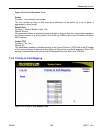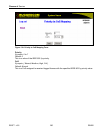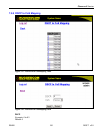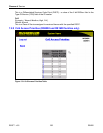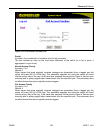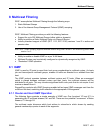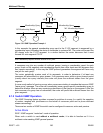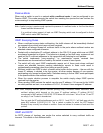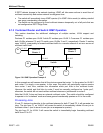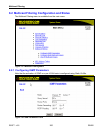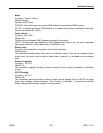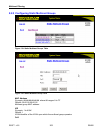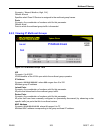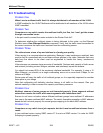
Multicast Filtering
RS400 197 ROS™ v3.5
Passive Mode
When such a switch is used in a network with a multicast router, it can be configured to run
Passive IGMP. This mode prevents the switch from sending the queries that can confuse the
router causing it to stop issuing IGMP queries.
Note: A switch running in passive mode requires the presence of a multicast router or it will not be able to
forward multicast streams at all
If no multicast routers present, at least one IGMP Snooping switch must be configured for Active
IGMP mode to make IGMP functional.
IGMP Snooping Rules
• When a multicast source starts multicasting, the traffic stream will be immediately blocked
on segments from which joins have not been received.
• The switch will always forward all multicast traffic to the ports where multicast routers are
attached unless configured otherwise.
• Packets with a destination IP multicast address in the 224.0.0.X range which are not IGMP
are always forwarded to all ports. This behavior is based on fact that many systems do not
send join for IP multicast addresses in this range while still listening to such packets.
• The switch implements “proxy-reporting”, i.e. membership reports received from
downstream are summarized and used by the switch to issue its own reports.
• The switch will only send IGMP membership reports out of those ports where multicast
routers are attached because sending membership reports to hosts could result in
unintentionally preventing a host from joining a specific group.
• Multicast routers use IGMP to elect a master router known as the querier – the one with the
lowest IP address is elected to be the querier, all other routers become of non-queriers,
participating only forward multicast traffic. Switches running in Active IGMP mode participate
in the querier election like multicast routers.
• When the querier election process is complete the switch simply relays IGMP queries
received from the querier.
• When sending IGMP packets the switch uses its own IP address, if it has one for the VLAN
on which packets are sent, or an address of 0.0.0.0, if it doesn’t have assigned IP address.
Note: IGMP Snooping switches perform multicast pruning using a multicast frames’ destination MAC
multicast address which depends on the group IP multicast address: IP address W.X.Y.Z
corresponds to MAC address 01-00-5E-XX-YY-XX where XX is the lower 7 bits of X and YY and ZZ
are simply Y and Z coded in hexadecimal.
One can note that IP multicast addresses such as 224.1.1.1 and 225.1.1.1 will both map onto the
same MAC address 01-00-5E-01-01-01. This is indeed a problem for which the IETF Network
Working Group currently has offered no solution. Users are advised to be aware of and avoid this
problem.
IGMP and RSTP
An RSTP change of topology can render the routes selected to carry multicast traffic as
incorrect. This results in lost multicast traffic.



